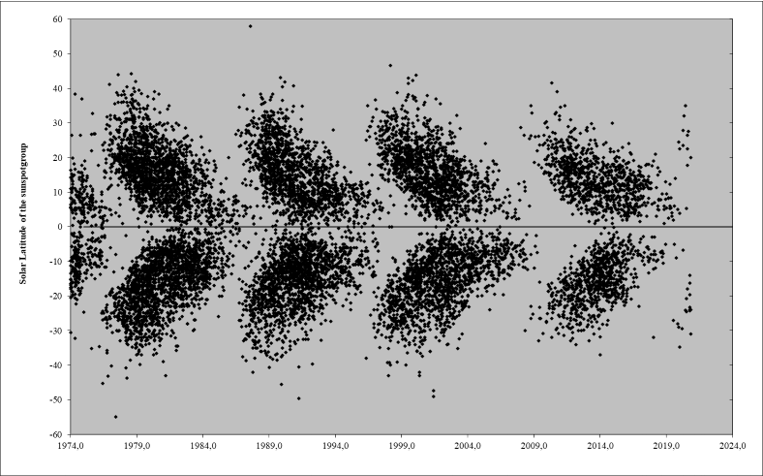On 10 November, a new and fairly simple sunspot region started to rotate into view at the southeast limb. Then, late on 11 November, this NOAA 2782 produced a long duration C2.6 flare. A long duration event (LDEs) is generally defined as a flare lasting more than 1 hour, though there exist other definitions. LDEs are ususally associated with coronal mass ejections. Moreover, in this case, SDO's extreme ultraviolet (EUV) imagery underneath (right) indicated the presence of post-flare coronal loops as well as some coronal dimming ("darkening"). Both are indicators that the flaring event might be associated with a CME. Sure enough, a CME was observed emanating from the southeast limb, but it had no earth-directed component.

This was already the third sunspot region observed this month, following the month October when no less than 6 new regions were observed. They all belonged to the new solar cycle 25 (SC25), indicating that SC25 is quickly gaining in strength. These sunspot regions are more or less evenly spread over both solar hemispheres, though the largest sunspot regions have emerged in the southern solar hemisphere. The distribution of the sunspot groups can be seen in the so-called butterfly diagram underneath, displaying for each month since 1974 the latitude of every individual sunspot group (NOAA number) that has appeared. It clearly shows that during the period of solar cycle minimum, the sunspot groups appear ever closer to the solar equator, gradually becoming smaller and disappearing while the sunspots of the new solar cycle manifest themselves again at high latitudes. As the pattern resembles the wings of a butterfly, it is called a butterfly diagram. The sunspot groups from the new solar cycle SC25 that have appeared so far clearly reveal the outer tips of the new butterfly's wings.






